2019 California Standards for Accessible Design Guide (effective January 1, 2020 with July 1, 2021 amendments)
11B-307 Protruding objects
11B-307.1 General.
Protruding objects shall comply with Section 11B-307.
11B-307.2 Protrusion limits.
Objects with leading edges more than 27 inches (686 mm) and not more than 80 inches (2032 mm) above the finish floor or ground shall protrude 4 inches (102 mm) maximum horizontally into the circulation path.
Exception: Handrails shall be permitted to protrude 4½ inches (114 mm) maximum.

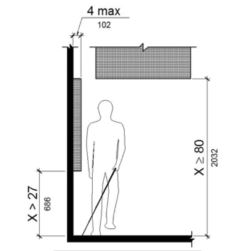
FIGURE 11B-307.2 LIMITS OF PROTRUDING OBJECTS
11B-307.3 Post-mounted objects.
Free-standing objects mounted on posts or pylons shall overhang circulation paths 12 inches (305 mm) maximum when located 27 inches (686 mm) minimum and 80 inches (2032 mm) maximum above the finish floor or ground. Where a sign or other obstruction is mounted between posts or pylons and the clear distance between the posts or pylons is greater than 12 inches (305 mm), the lowest edge of such sign or obstruction shall be 27 inches (686 mm) maximum or 80 inches (2032 mm) minimum above the finish floor or ground.
Exception: The sloping portions of handrails serving stairs and ramps shall not be required to comply with Section 11B-307.3.
11B-307.3.1 Edges and corners.
Where signs or other objects are mounted on posts or pylons, and their bottom edges are less than 80 inches (2032 mm) above the floor or ground surface, the edges of such signs and objects shall be rounded or eased and the corners shall have a minimum radius of 1/8 inch (3.2 mm).
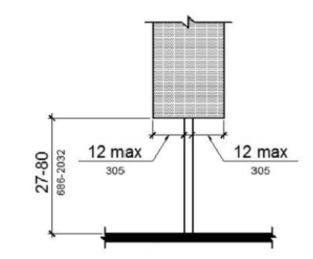
(a)
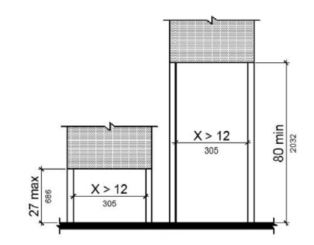
(b)
FIGURE 11B-307.3 POST-MOUNTED PROTRUDING OBJECTS
11B-307.4 Vertical clearance.
Vertical clearance shall be 80 inches (2032 mm) high minimum. Guardrails or other barriers shall be provided where the vertical clearance is less than 80 inches (2032 mm) high. The leading edge of such guardrail or barrier shall be located 27 inches (686 mm) maximum above the finish floor or ground.
Exception: Door closers and door stops shall be permitted to be 78 inches (1981 mm) minimum above the finish floor or ground.
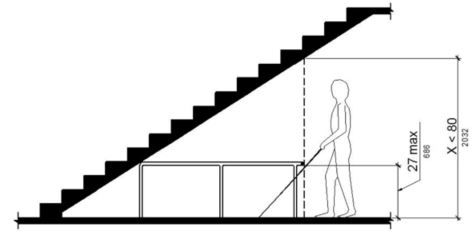
FIGURE 11B-307.4 VERTICAL CLEARANCE
11B-307.4.1 Guy braces.
Where a guy support is used within either the width of a circulation path or 24 inches maximum outside of a circulation path, a vertical guy brace, sidewalk guy or similar device shall be used to prevent a hazard or an overhead obstruction.
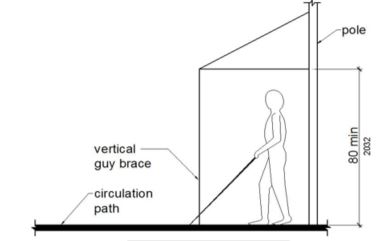
FIGURE 11B-307.4.1 GUY BRACES
11B-307.5 Required clear width.
Protruding objects shall not reduce the clear width required for accessible routes.

User Comments/Questions
Add Comment/Question